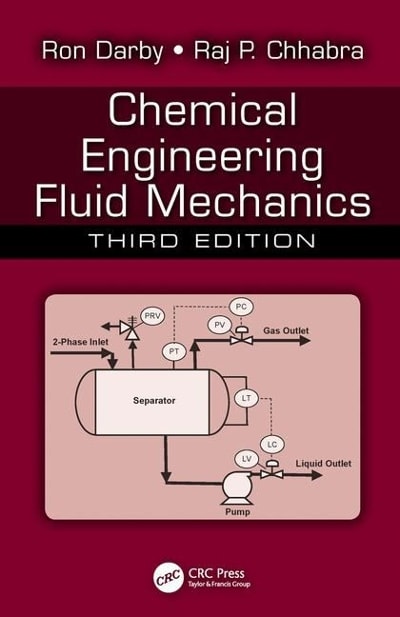A dilute aqueous $mathrm{CaCO}_{3}$ slurry is pumped into the bottom of a classifier, at a rate of
Question:
A dilute aqueous $\mathrm{CaCO}_{3}$ slurry is pumped into the bottom of a classifier, at a rate of $0.4 \mathrm{~m}^{3} / \mathrm{s}$, and overflows at the top. The density of the solids is $2.71 \mathrm{~g} / \mathrm{cm}^{3}$.
(a) What should the diameter of the classifier be if the overflow is to contain no particles larger than $0.2 \mathrm{~mm}$ in diameter?
(b) The same slurry as in (a) is sent to a centrifuge, which operates at $5000 \mathrm{rpm}$. The centrifuge diameter is $20 \mathrm{~cm}$, its length is $30 \mathrm{~cm}$, and the liquid layer thickness is $20 %$ of the centrifuge radius. What is the maximum flow rate that the centrifuge can handle and achieve the same separation as the classifier?
Step by Step Answer:

Chemical Engineering Fluid Mechanics
ISBN: 9781498724432
3rd Edition
Authors: Ron Darby, Raj P Chhabra





